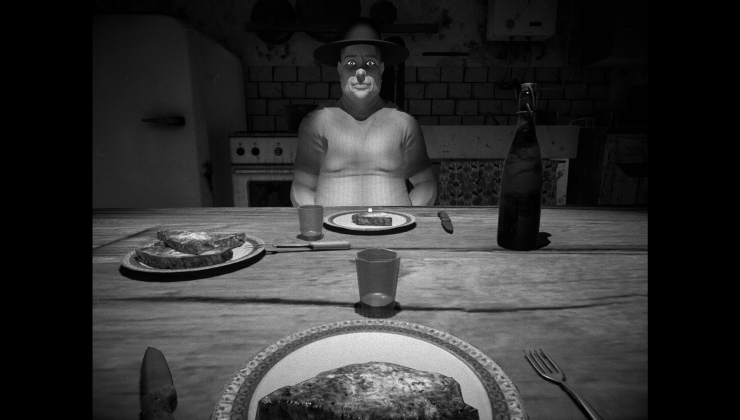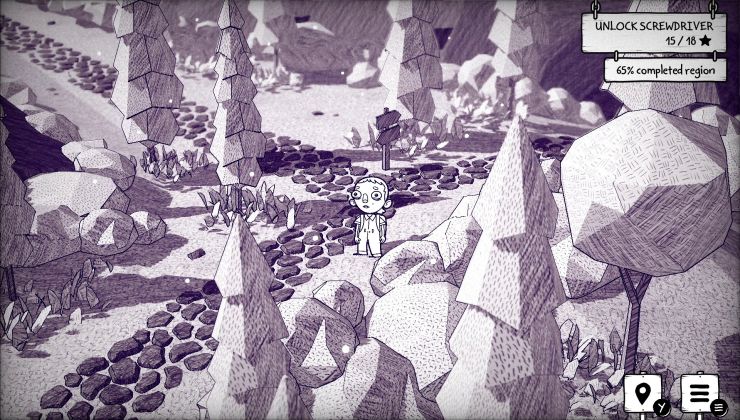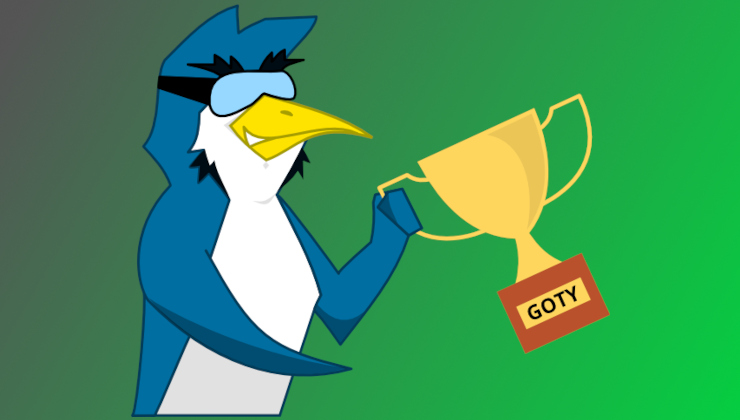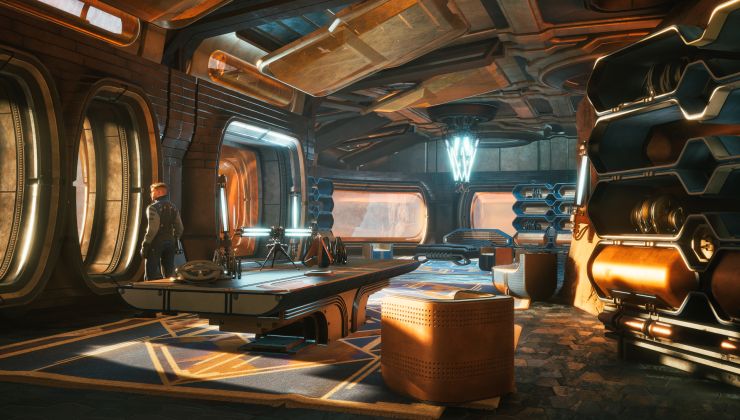Return to Part 1: Dumpster Diving
Continued from Part 42: Upset the Applecart
The Spanish game development scene does not get much attention paid to it, especially when compared to some of its other European counterparts, but sometimes you encounter polymaths like Ángel Ortega that deserve to be highlighted. As well as being a coder he is also an artist and a musician, and having been inspired by games like Wolfenstein 3D, he and a group of his friends decided to try their best to bring their own vision of a 3D shooter to life right at the start of the genre.
Freaks! 2002 is a reworking of Freaks! from 1993 first released for MS-DOS, with the game now allowing for full angle rotation instead of the limited 90 degree steps seen in the original version of the game, as well as the addition of sound effects and an array of new lighting and atmospheric flourishes. The game was also rebalanced by having corpses become health pickups, unlike in the original Freaks! where your health was restored simply by killing enemies.
As Ortega was so fond of crafting his own tools, building the game is akin to assembling a nesting doll. To satisfy the config.sh script you have to first install his Grutatxt and mp_doccer utilities, and then build both filp and qdgdf in so named sub-directories inside the main game directory. Then you can make the actual game binary which builds with support for both SVGAlib as well as for X11, although launching from the console with SVGAlib sadly just resulted in a segmentation fault for me.
Combat is basic with you being able to fire a limitless supply of green balls at enemies, much like in the seminal Catacomb 3D. This means you just circle strafe on repeat until any given monster dies; but if more than one monster is able to reach and then grab hold of you, then you will get locked in place for an almost guaranteed death, unless you manage to strafe. This can be a real bear to deal with when facing monsters in tight rooms, and makes frequent saving a must to get through the levels.
At times you just have to cheese them by getting monsters stuck on corners, or creep around to bait the hordes out to you in more manageable numbers. What keeps you playing then is the variety and inventiveness of the monster designs on offer, as well as the endearing worlds brought to life out of the primitive technology. Each episode contains a massive hub with a unique setting, with the first episode in particular presenting a cavalcade of critters and environments to both behold and explore.
I was able to 100% the game with the exception of the second episode, as seven of the enemies were left behind glass with no apparent means of accessing them. One of them did get stuck on the wall in an adjoining room, allowing us to harm each other, but the others were unreachable. The penultimate episode also lets the game down a touch by having a bloated enemy count showcasing swarms of the exact same monsters, making clearing it become more like a series of slaughter maps.
The ultimate episode, which consists of just the one arena containing the final boss and his lackeys, also proved to be difficult to navigate. A visual effect is added to make the world seem to phase in and out, but I would also sometimes literally clip in and out of the map and become out of bounds, forcing me to find my way back in. Doors can be spatially awkward as well, as you just teleport through them into the next named area, which can be especially inconvenient when backing into one.
Ángel Ortega would also release another first-person maze game in 1997 called Space Plumber, which again he ported over to Linux using qdgdf. Rather than slaying monsters, players are instead tasked with seeking valves and consoles to prevent the gradual flooding of an evacuated mining station. This then is an early example of a game built around speedrunning, but if your interests lay elsewhere it is otherwise not that compelling, although the bleak atmosphere can still leave an impression.
There are thirty missions locked behind level codes, as well as the ability to procedurally generate your own maps, which again was forward thinking for the time. Building the game was much the same process as it was with Freaks! 2002, although filp is not required for compiling Space Plumber, and the SVGAlib version again still segfaults for me. Performance wise both games would have benefited from my having just a bit more CPU horsepower, but were still manageable none the less.
While both of the games are a little rough around the edges, there is a real auteur talent here that was impossible for me not to appreciate, and one of the joys of looking back like this is having the opportunity to give obscure creators like Ángel Ortega and his development house Triptico their due. In the same vein, I now intend to look into the history of another free software classic, this time originating in Japan before being expanded upon by people from all over the world.
Carrying on in Part 44: The Legend of Kobo
Return to Part 1: Dumpster Diving







 How to setup OpenMW for modern Morrowind on Linux / SteamOS and Steam Deck
How to setup OpenMW for modern Morrowind on Linux / SteamOS and Steam Deck How to install Hollow Knight: Silksong mods on Linux, SteamOS and Steam Deck
How to install Hollow Knight: Silksong mods on Linux, SteamOS and Steam Deck